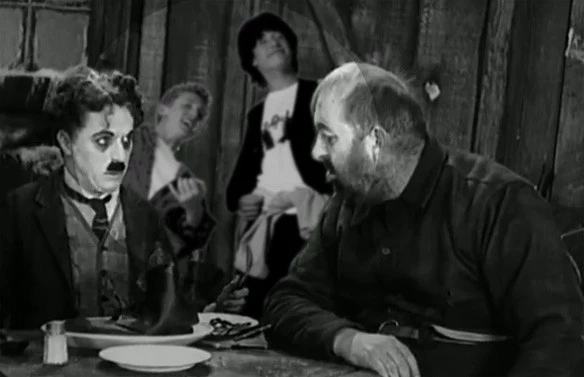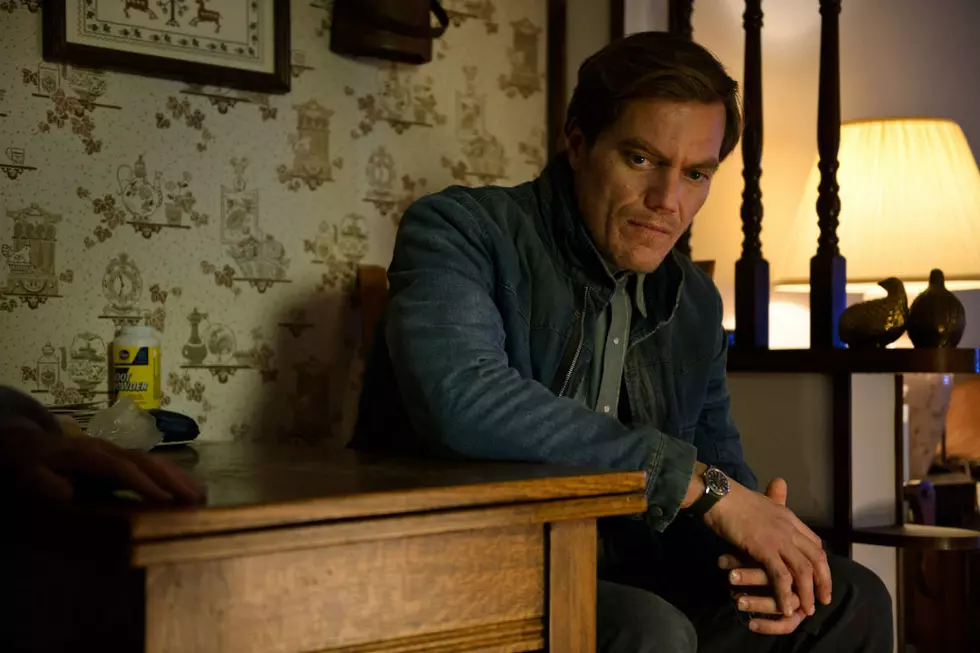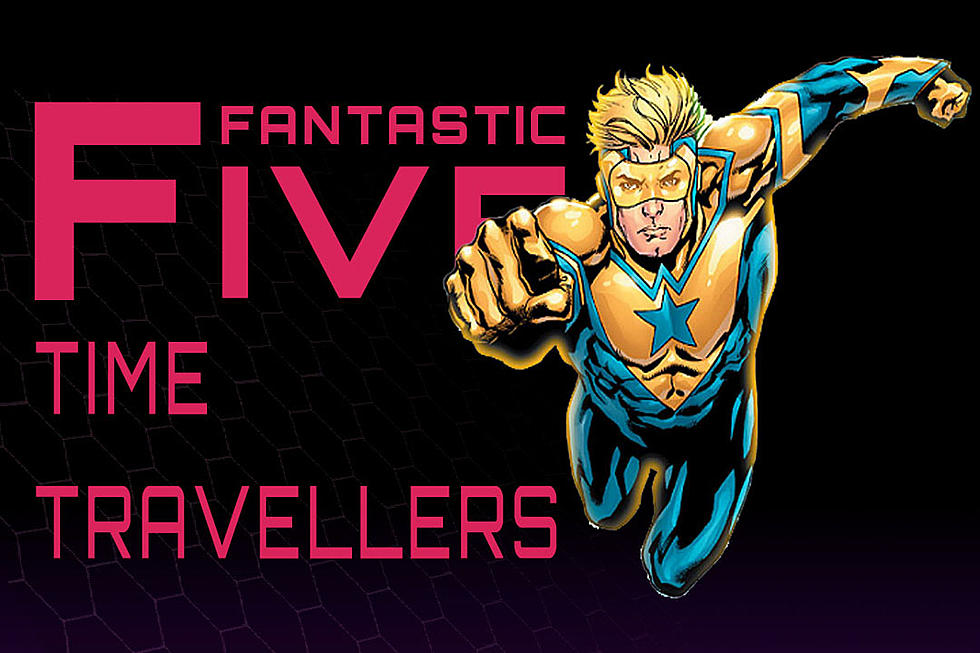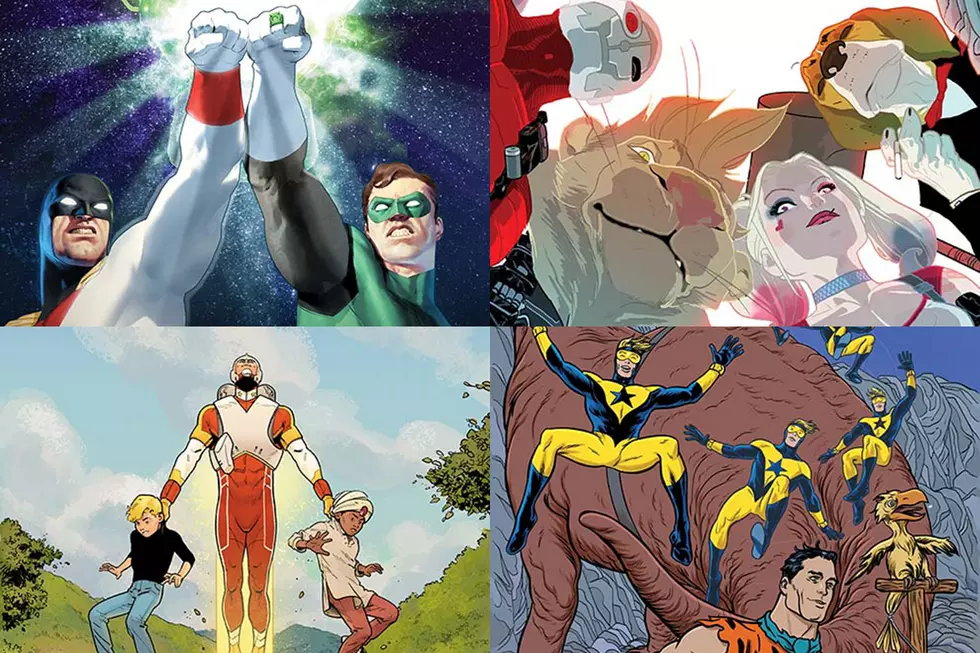
10 More Time Travelers Appear In Charlie Chaplin’s Films
If you've been paying any attention to the Internet over the past few days, then you've probably gotten wind of the Earth-shattering news broken by Irish filmmaker George Clarke, who discovered the shocking footage of what he believes to be a time traveler at the 1928 premiere of Charlie Chaplin's The Circus, handily identified by the fact that she's chatting away on a cell phone.
Sure, the so-called "experts" may have allegedly "debunked" the time travel theory by explaining it's actually an old-style hearing aid, but that just means that this conspiracy goes deeper than anyone imagined. We here at ComicsAlliance have been trained by years of super-hero stories to keep an open mind about this sort of thing, so we went back through our own copies of Chaplin's features to see if there was any other evidence for time travel. And we didn't just discover one more, we found that there was undeniable proof of at least ten more time travelers in Chaplin's films!
#1. From Modern Times, 1936:
 During the famous "coffee scene" in one of Chaplin's most beloved films, an extremely muscular man in what can only be described as "futuristic" attire appears briefly in the background, as seen in the highlighted area above. Experts have dismissed him as an actor who wandered into the shot, using his obviously cheap prop gun as evidence (it has a slight bend in the middle and seems to lack grips), but his glowing eye and constant shouting are far more indicative of someone from the early '90s.
During the famous "coffee scene" in one of Chaplin's most beloved films, an extremely muscular man in what can only be described as "futuristic" attire appears briefly in the background, as seen in the highlighted area above. Experts have dismissed him as an actor who wandered into the shot, using his obviously cheap prop gun as evidence (it has a slight bend in the middle and seems to lack grips), but his glowing eye and constant shouting are far more indicative of someone from the early '90s.
#2. From The Circus, 1928:

The scene of Chaplin's "Little Tramp" character being chased into a funhouse is briefly interrupted in one shot by the appearance of a large man in sunglasses who is carrying a shotgun. This is incongruous to the rest of the film, as not only would the inexpensive mass production of sunglasses not begin until the following year, but the gentleman in question bears a striking resemblance to Termy, the mascot of Cyberdyne Systems, Inc., who would not be popularized in advertising until 1997. Coincidence?!
#3. From The Kid, 1921:

One of the main nitpicks to Clarke's original theory was that a society that developed a functioning time machine would have probably moved past recognizable cell phone technology. Fair point, but get ready to have your mind blown: After the Little Tramp's window-repair scheme is foiled, sharp-eyed viewers can see a man descending rapidly from the sky, apparently talking to a small metal object floating next to him. Could this be a mobile phone... from the future?
#4. From City Lights, 1931:

If you look closely at the crowd during the boxing scene of City Lights, you can see something in the background that appears to be labeled as a British Police Box circa 1950. Despite the apparent anachronism, this is actually not that unusual: Even an amateur historian can find evidence of this sort of shape popping up all over the place, from Ancient Greece to the Renaissance.
Usually shows up in England, though.
5. From City Lights, 1931:

Like Modern Times, the finale of City Lights features another odd cameo, and this is clearly a time traveler. For one thing, the mullet did not reach national prominence until the '70s, and for another, mutants were not identified with an "M" tattoo over their right eyes until well after 1931 with the Mutant Registration Act of 1991.
#6. From The Circus, 1928:

If time travelers to the past can be identified by modern trappings, then truth-seekers need look no further than the crowd shot in The Circus, where two distinctly modern people can be seen watching Chaplin run. Not only is one of them wearing fitted jeans (and shoes that, upon close examination of surviving high-quality prints, appear to bear the Nike swoosh), but the other bears a striking resemblance to discredited chronologist Emmet "Doc" Brown. What do THEY not want you to know?!
#7. From The Great Dictator, 1940:

Chaplin was a known perfectionist, so it's highly unlikely that he would have left a shot in which a cameraman casually wandered on set in one of his films -- especially one as outrageously dressed as the gentleman pictured above -- unless he was attempting to send us a message. Even discounting that, though, close examination will reveal that the type of handheld camera he's using -- a signature design of the Kirbytech corporation -- wouldn't be developed until 1961.
#8. From Modern Times, 1936:

One of Chaplin's masterpieces, Modern Times is a clear analogue for the Great Depression and the role of the worker in modern industrialized society. A shirtless farmhand or day laborer would not have been an uncommon sight on the still-rural highways of California at the time, but one wearing spandex pants and holding a what appears to be a belt full of anti-crime devices? That's a little more difficult to believe.
#9. From Modern Times, 1936:

Speaking of spandex (which wasn't invented until 1959), Modern Times also provides us with what might be the most compelling evidence for both time travelers and Chaplin's knowledge of them. During one shot, a perfectly round plastic globe can be seen in the background as two young people in futuristic clothing run towards it and get inside. Then, despite the fact that the shot remains constant, this "bubble" vanishes. Could this be not only time travelers, but actual time travel itself captured on film?!
#10. From The Gold Rush, 1925:

As our final piece of compelling evidence, I offer this: The famous scene of Chaplin's tramp and his fellow vagabond cooking and eating his own boot is often referenced and parodied in pop culture, but what's usually left out is that at one point, they're joined by two other vagrants. It's easy to write these two off as hobos, what with their mismatched clothes, but at one point, they can clearly be seen to Air Guitar, a practice that -- outside of mysterious references in Ancient Greece and a brief fad among the royalty of the middle ages known as "playeing thine lute of ayere" -- did not reach prominence until the 1980s.
More From ComicsAlliance




![‘Justice League Action’ Forges Its Own Path, Delivers On The Action [Review]](http://townsquare.media/site/622/files/2016/12/action_featured.jpg?w=980&q=75)




